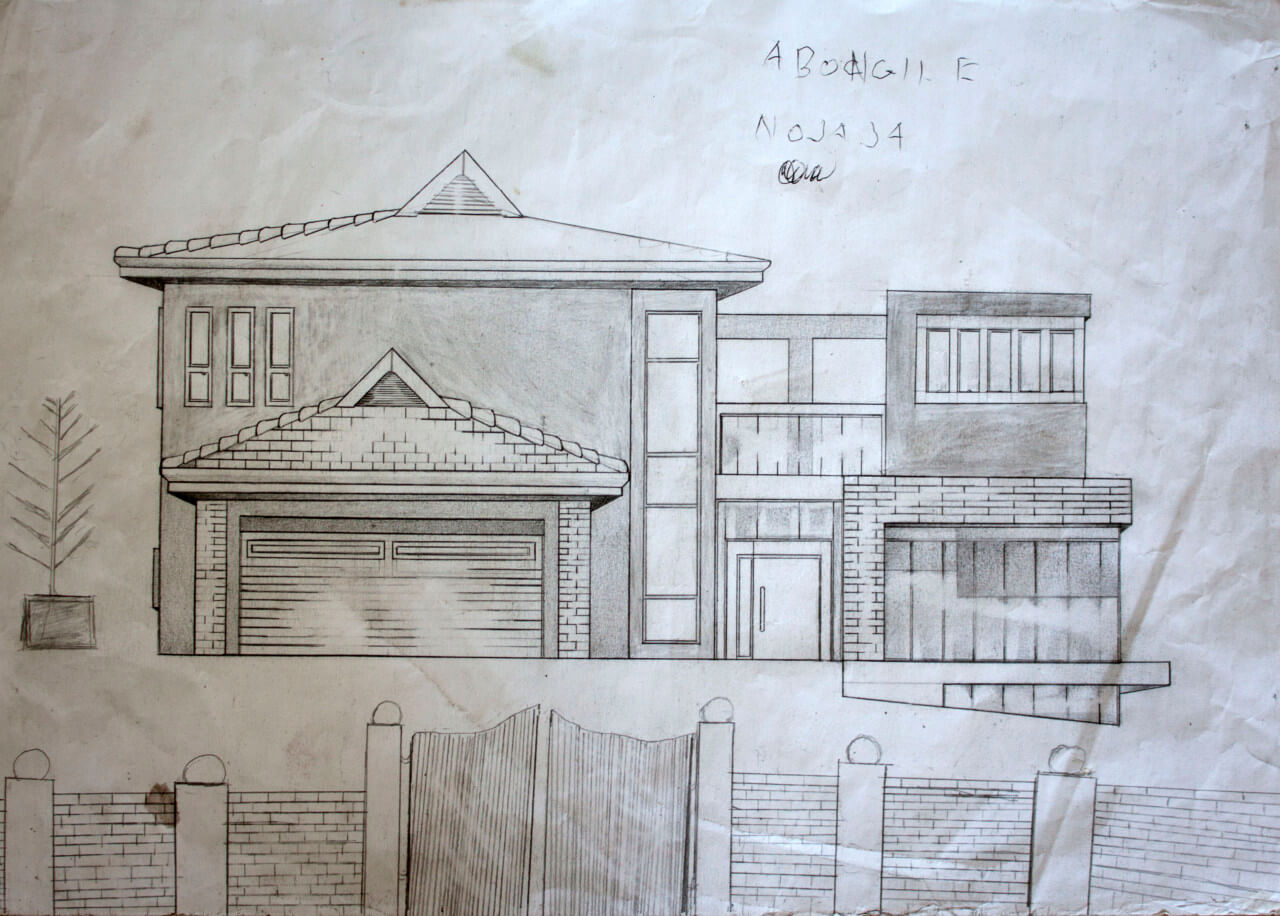Questions of Scale
I bought this drawing on a street corner in Braamfontein. The draftsperson is a young man named Abongile Nojaja. Abongile explains that he grew up in Cape Town, and from what I could gather left an abusive home before finishing school, ending up in Johannesburg.

Abongile only draws houses, in variation, using pencil. Some of the houses are simple, in colour, while others extend into the fantastic. He tells me that he makes these drawings in an internet cafe, where he buys R20 worth of surfing time and draws directly from the screen. There are also impressive architectural renditions with accurate shading and detailing.
I ask him where he lives; he points to the area alongside the entrance to the building. Adjacent to the drawings, he has built an elaborate miniature cardboard house – complete with a pitch roof and double garage, and painted in bright yellows and pinks. I have witnessed his interactions with customers who have bought these houses from him, or ordered some to specification. Over the last year the number of homeless men in the city has almost doubled, lining Rissik street with makeshift cardboard shelters. Near to the Carlton Centre, I am given a cheaply printed flyer for a housing development on the edge of the Southern Suburbs, bordering Soweto and Lenasia. A family is photoshopped in front of the model home.
Further down the same street are the Stevenson and Kalishnikov galleries, and previously Room Gallery, as well as a surplus of designer clothing and sneaker stores. Abongile is situated outside the former Ithuba Arts, an independent artist run space closed since late 2015. A little further on is the glass facade of the Wits Art Museum, and across the road Wits School of Arts’ project space, The Point of Order. These proximities and distances are at times difficult to reconcile, bringing into view the incommensurable economies of the image. I own two of Abongile’s drawings; I am not his only collector. I wonder what the work would perform if placed inside one of the exhibition spaces. Would this disrupt the fragile economy in which it already exists? I reflect on my fascination with the untrained mark as a kind of authenticity that I have the authority to legitimate by circulating it within another field of value. I am aware of the failure of this gesture to address Abongile’s real precarity. I post the image on Instagram.
The drawing attains a certain pathos where the proportions begin to defy the logic of scale. The large elevation of the central volume against the elaborate roof of the garage, which almost dwarfs the house. And in the yard, a single potted tree, naively archetypal. I am interested in this tree, and the wall and gate, which separate us from the drawn field – push us outward and produce our view. Like the tree, the wall disrupts the proportions of the house. I wonder if the house is owned by a photoshopped family. Or stands empty amongst lists of houses for sale on websites, in secured estates, or suburbs. Here too architectural scales and volumes expand in proportion to the heights of walls.